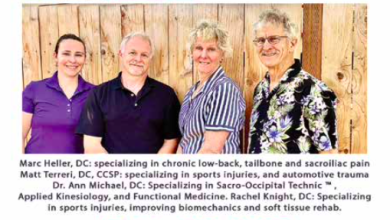Got Foot Pain? Try Pulsewave
Foot pain is very common in our society and can be difficult to treat because of many different factors. This is complicated by the fact that most of us bear weight and rely on our feet all day. Some of the more common foot ailments that people suffer from are plantar fasciitis, Achilles tendonitis/osis, metatarsalgia, ankle sprains and Morton’s neuroma. In fact, plantar fasciitis is the most common cause of heel pain and makes up approximately 11% to 15% of all foot symptoms. In addition, the ankle ligaments are also some of the most sprained ligaments in the body.
Many foot conditions can be treated with a conservative combination of manipulation, exercises, taping, orthotics and sometimes changing footwear. But what do you do if your conservative treatment is not working? Surgery is sometimes recommended but is definitely a last resort. Oftentimes the injured tissues in our bodies are too deep to be reached with our hands, or the tissues just don’t get the nutrients they need. Many structures in the body (plantar fascia, ligaments and tendons for example) rely on a fresh blood supply to heal. Our blood and other fluids have unique properties that repair these tissues. If blood cannot reach those structures adequately they often only partially heal, if at all.
This is where Pulsewave (also known as Shockwave) plays a part. I have found that using this technology in conjunction with the other listed therapies is often the missing puzzle piece for the difficult cases that just don’t seem to heal. The machine was originally derived from the device that breaks up kidney stones (lithotripsy). Scientists started to notice that other injuries in the body exposed to this machine during treatment would start to heal, even though those tissues were not originally targeted for therapy.
Thus, the Pulsewave machine was created. It emits a high-energy pulsed sound wave that travels deep through your injured muscles, tendons, ligaments and bones to heal damaged cells. When the injured cells encounter a pulse wave, a biological cascade (reaction) recruits your body’s own natural healing agents such as red blood cells, growth factors and stem cells to restart first stage healing, and shut down pain fibers.
In a plantar fasciitis treatment study for the most difficult cases, the overall success rate was 61% compared to 42.2% in the placebo group at 12 weeks post-treatment. This number increased from there at 12 months follow up. In Achilles tendonitis, one treatment study treated a total of 74 tendons in 60 patients with difficult cases. Overall, 58 tendons dramatically improved at at least one year post-treatment.
Other studies reflect the same kind of success in the other foot problems mentioned above. Unlike prolo or stem cell therapy, there are no injections. There is no downtime, and treatment is done in short visits at the office. Typical treatments are 1x/week for 4-5 weeks, and although treatment ends at about week 4 or 5, your body’s tissues continue to regenerate for about 12 more weeks. This is done in conjunction with your ongoing therapy.
So if you’re having foot pain that does not seem to be getting better, this therapy might just be for you!
Google Pulsewave or Shockwave therapy for more information (the science and results speaks for itself!) or just call me at the office (541) 482-0625, and I would be happy to answer any questions you might have.
Matt Terreri, DC, CCSP is a sports chiropractor at Southern Oregon Sports & Spine as well as the official chiropractor for the SOU Raiders and a volunteer medical provider for the U.S. Olympics.



